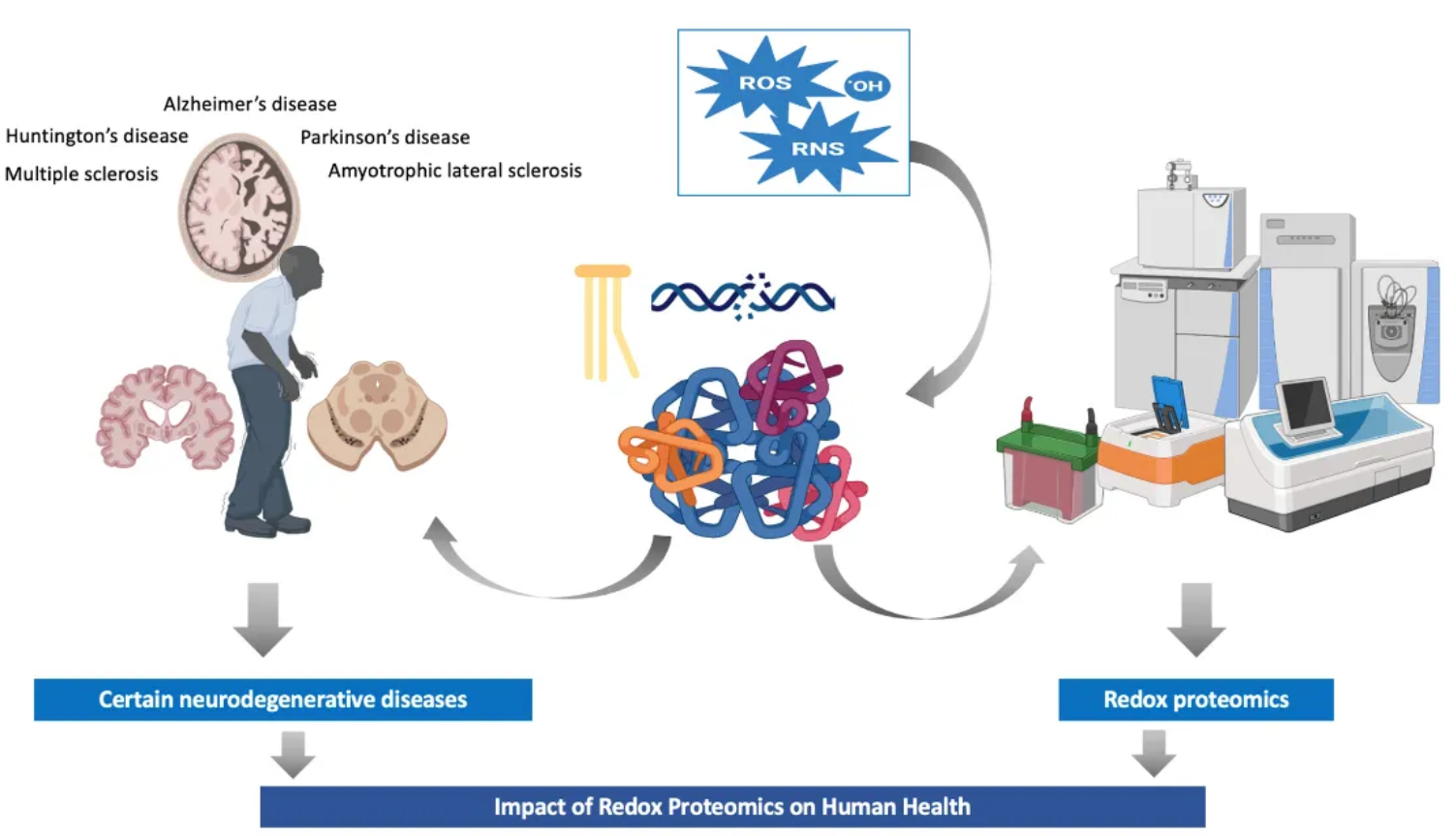Redox-related Modifications Analysis Service
MtoZ Biolabs provides a specialized Redox-related Modifications Analysis Service to help researchers systematically investigate protein alterations that arise under oxidative and reductive conditions, such as nitrosylation, nitration, glutathionylation, cysteinylation, and carbonylation. These modifications act as molecular switches that control enzyme activity, regulate signaling pathways, modulate protein–protein interactions, and maintain cellular redox balance in response to stress. To support both focused mechanistic studies and proteome-scale investigations, we offer two complementary analytical approaches.
1. Target Protein Redox-related Modifications Analysis
For projects focused on specific proteins, MtoZ Biolabs applies high-resolution LC-MS/MS together with selective enrichment techniques to achieve sensitive site-level characterization. Immunochemical tools such as ELISA and Western blotting provide orthogonal validation and quantitative comparison, while biotin-switch assays and resin-assisted capture strategies enhance specificity for cysteine-based redox modifications. This targeted workflow enables precise evaluation of modification states, functional effects, and redox-dependent regulatory mechanisms in individual proteins.
2. Redox-related Modifications Proteomics
For broader discovery-driven studies, our proteomics workflow integrates LC-MS/MS, enriched sample preparation, and bioinformatics pipelines to comprehensively map redox-related modifications across complex proteomes. Quantitative profiling captures low-abundance events, while pathway enrichment and network-level modeling place these modifications into functional context, revealing how oxidative or reductive stress reshapes cellular pathways, signaling networks, and protein–protein interactions at a systems level.
Our Redox-related Modifications Analysis Service encompasses:
🔸Nitrosylation Analysis Service
🔸S-Nitrosylation Analysis Service
🔸Carbonylation Analysis Service
🔸Free Thiol Group Analysis Service
🔸S-Glutathionylation Analysis Service
🔸Cysteinylation Analysis Service
What is Redox-related Modifications?
Cellular redox homeostasis is maintained through a delicate balance between reactive oxygen species (ROS), reactive nitrogen species (RNS), and antioxidant defense systems. Proteins are highly sensitive to these fluctuations, and specific amino acid residues, particularly cysteine, methionine, and tyrosine, frequently undergo oxidative or nitrosative modifications. These redox-related modifications serve not only as protective mechanisms against irreversible oxidative damage but also as regulatory signals that fine-tune protein structure, catalytic activity, and molecular interactions.
Among these modifications, cysteine thiol groups (-SH) are the most reactive and versatile redox-sensitive sites. They can be oxidized to form intra- or intermolecular disulfide bonds (-S-S-), which act as reversible regulatory switches controlling protein folding, catalytic activity, and intermolecular communication. In addition, cysteine thiols can form mixed disulfide adducts with glutathione (-SSG), a protective and regulatory modification that integrates redox signaling with glutathione metabolism. Beyond thiol oxidation, proteins may also undergo other common redox modifications, including S-nitrosylation, S-glutathionylation, and carbonylation. Although distinct in their chemistry, these modifications collectively represent a broad regulatory network that links oxidative signals to functional protein outcomes.
These redox modifications are not merely markers of oxidative stress but function as finely tuned regulatory events. They govern processes such as apoptosis, metabolic adaptation, immune responses, and transcriptional regulation. However, when dysregulated, they contribute to pathological outcomes, including cancer, cardiovascular disease, diabetes, and neurodegenerative disorders.

Cadenas-Garrido, P. et al. Antioxidants (Basel). 2024.
Figure 1. Redox Proteomics: Impact on Human Health and New Insights
Analysis Workflow

Sample Submission Suggestions
1. Sample Types

For other sample types, please contact us in advance for tailored preparation guidance.
2. Sample Handling: Avoid oxidizing or reducing agents that could alter the native redox state.
3. Storage: Snap-freeze in liquid nitrogen and store at –80°C until shipment.
4. Shipping: Transport on dry ice to maintain integrity of modifications.
5. Replicates: Include biological replicates to ensure statistical reliability of results.
Service Advantages
☑️Comprehensive Analytical Capability: Integration of MS, biochemical, and antibody-based techniques ensures robust and complementary results.
☑️High Sensitivity and Specificity: Advanced Orbitrap LC-MS/MS platforms deliver precise identification of low-abundance modifications.
☑️Customizable Workflows: Flexible service design tailored to targeted protein studies or global proteomic profiling.
☑️Expert Scientific Team: Researchers with extensive experience in redox biology and proteomics provide reliable support and interpretation.
☑️Rapid Turnaround: Streamlined processes guarantee timely data delivery without compromising quality.
Applications
Redox-related modifications analysis supports a wide range of research and clinical fields:
1. Biomedical Research: Understanding how redox signaling regulates cell cycle, apoptosis, inflammation, and stress response.
2. Disease Mechanisms: Identifying dysregulated redox modifications in cardiovascular disease, cancer, diabetes, and neurodegenerative disorders.
3. Biomarker Discovery: Detecting oxidative modification patterns as diagnostic or prognostic indicators.
4. Drug Development: Evaluating the effects of therapeutic compounds on redox regulation and oxidative modifications.
Deliverables
1. Comprehensive Experimental Details
2. Materials, Instruments, and Methods
3. Relevant Liquid Chromatography and Mass Spectrometry Parameters
4. The Detailed Information of Redox-related Modifications Analysis
5. Mass Spectrometry Image
6. Raw Data
Redox-related protein modifications represent a central layer of cellular regulation, linking oxidative signals to functional outcomes in health and disease. Accurate characterization of these modifications is essential for advancing our understanding of redox biology, identifying disease biomarkers, and developing targeted therapies. If you are interested in our Redox-related Modifications Analysis Service, please feel free to contact us.







